Choosing an editing program can be confusing at the best of times, but it’s especially difficult if you’re new to the world of image editing. Most people have at least heard of Photoshop – the name has even made its way into pop culture.
What about Photoshop Elements? What’s the difference between the two? What’s the CC thing all about? Which program is best for you?
I’ll answer all these questions and more in this post, and I’ll also show you how you can test out each program for yourself for free.
I guess that means a bit of an introduction is in order, in case you haven’t read my other bio blurbs around the site. My name is Thomas Boldt, and I’ve been using Photoshop for over 20 years, ever since the heady days of fruit-flavored iMacs, back before Photoshop Elements even existed.
I’ve used Photoshop for business and pleasure, and I’ve used and reviewed many different versions of Photoshop Elements over the years, so I can offer some simple answers to your questions.
Table of Contents
What is Adobe Photoshop?
Adobe Photoshop is the industry-standard image editor used by professionals around the world. It’s the best image editor available for those who require the ultimate in image quality for print and screen alike.
That may sound extravagant, but it’s true. Many developers have released competitors aimed at dethroning Photoshop, and some of them are quite good – but if you look at the computers in the top advertising and design agencies around the world, they’re still going to be using Photoshop.
With that in mind, it’s even more surprising when you learn that most people using Photoshop only use a small fraction of the tools it includes.
Photoshop has become so jammed with features over the years that Adobe has actually begun to remove the video and 3D editing features, preferring to divide these features out into their own dedicated programs.
Even after taking a few out, there are still so many features that it would be impossible to do them all justice in a single post, but I’ll cover a few of the most important ones.
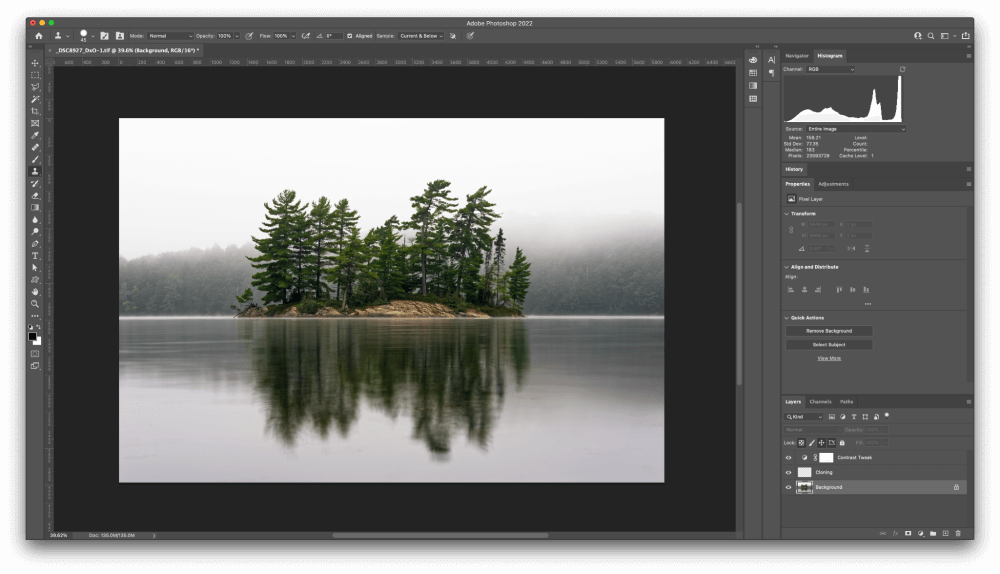
There are excellent brush-based editing tools that can do anything you could ever want to a pixel, and probably a few things you never even knew were possible.
You can create perfectly photorealistic digital art composites or manage a complete color correction workflow from a large-format digital camera all the way to fine art print in archival quality.
Most recent among Photoshop’s incredible features are so-called ‘Neural Filters’. It’s not a brain-computer interface (one day, maybe) but rather some incredibly advanced automatic adjustments, powered by Adobe’s machine-learning software.
If you’ve played around with the face swap apps and Snapchat filters that have been taking the smartphone world by storm in the last couple of years, you’ve probably got an idea of what’s possible.
Neural Filters allow you to perform extremely complex edits automatically, from basic skin smoothing to completely changing a person’s facial expression.
You can automatically colorize black and white photos, upscale photos without losing detail, or instantly harmonize the colors between two images to create a seamless composite.
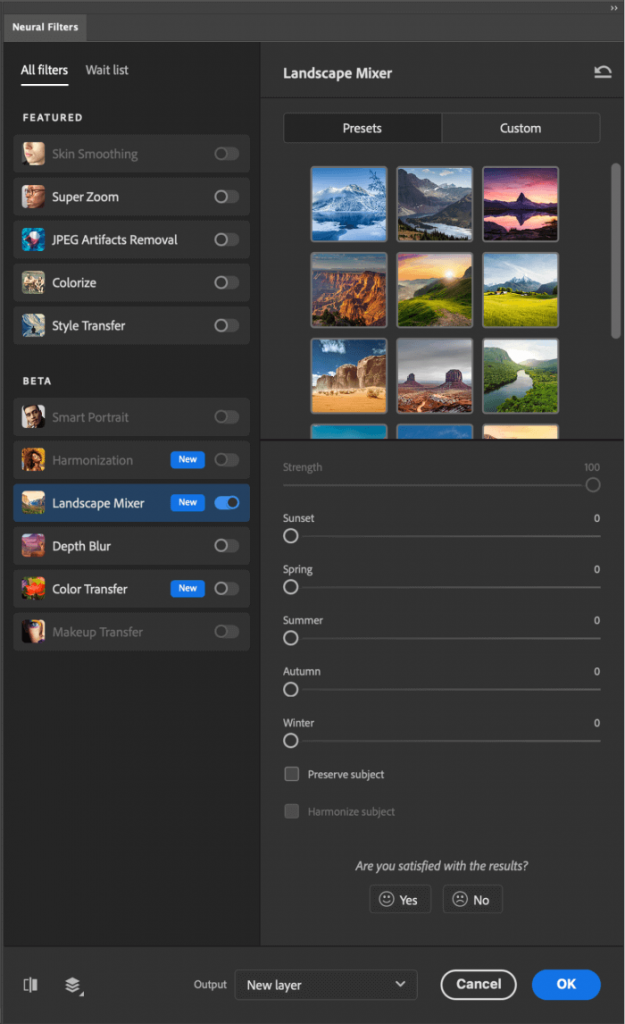
There are quite a few more, as well as a waitlist for additional filters that are currently in development. They may not produce high-quality results that are ready for a coffee table book, but they’ve got an incredible amount of potential.
Of course, there are also some people who just use Photoshop to make memes. Dramatically excessive overkill in the editing department, but probably really fun too.
The ridiculously feature-stuffed nature of Photoshop is also what led Adobe to create Photoshop Elements in the first place – and that was way back in 2001.
Photoshop is available for Macs and Windows PCs as part of a monthly subscription plan.
The cheapest plan is the Photography plan for $19.99 USD per month, which includes Photoshop, Lightroom, Lightroom Classic, and Photoshop for iPad, along with full access to Adobe Fonts and 1 TB of cloud storage for syncing data between your devices.
Wait, What About The CC Name?
The “CC” that was part of Photoshop’s name until recently stood for Creative Cloud, the new cloud-focused software platform that Adobe launched in 2013.
Every Adobe app received a CC-branded name change at that point, and they all moved from a single-purchase model to a monthly subscription model.
Unfortunately, many users were extremely displeased with this decision and there were some major issues with the new focus on cloud-based services during the early years.
The cloud was still a relatively new concept at the time and services often failed to sync, which was an unacceptable headache for anyone working against a deadline. The issues are now largely resolved, but you can read an excellent summary of the situation.
Photoshop CC 2019 was the last release to use the CC branding in its title, with each subsequent release named just for the year.
What is Adobe Photoshop Elements?
Photoshop Elements, as you might guess from the name, started out as a simplified image editor that focused on the core elements of Photoshop’s editing capabilities (subtle, I know!).
Since it was first launched back in 2001, it’s gone through a new upgrade release cycle every single year, which makes using the program a well-polished experience by
Photoshop Elements has a much more user-friendly interface than its more powerful cousin, and it’s better suited to casual users who are more focused on results rather than following the best possible image editing standards.
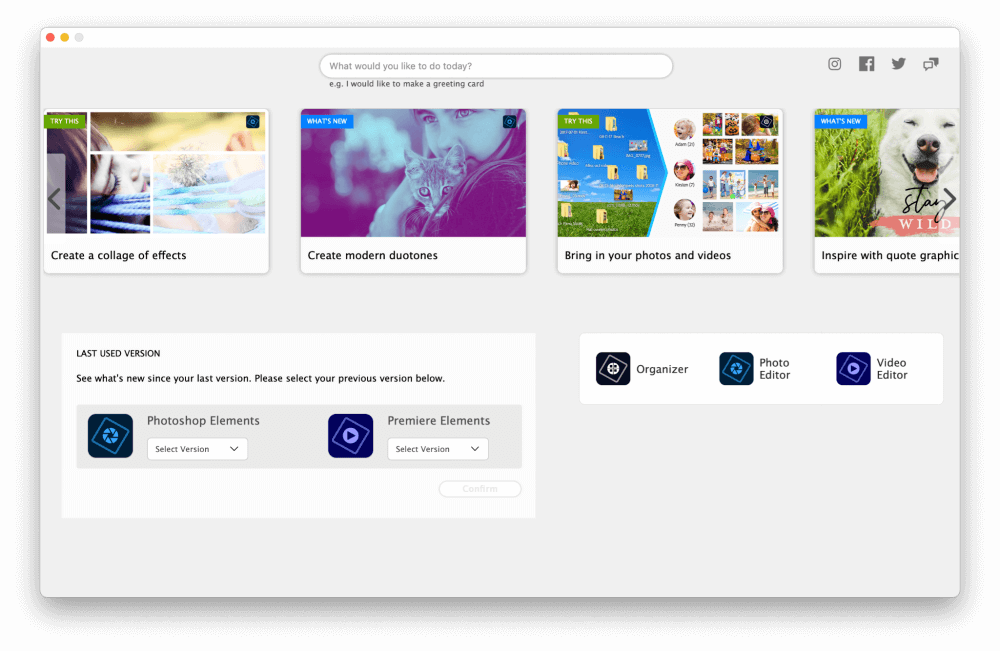
When you first load the program, you are presented with a task-based welcome screen that lets you search a range of tutorials for step-by-step guidance and provides updated information for users who are upgrading from a previous version of Elements.
Photoshop Elements also includes an organizer app to help keep track of your photo collection, as well as a bit of gentle prodding from Adobe to get you to purchase Premiere Elements for home video editing.
If you choose to open the Photo Editor workspace directly instead of launching a guided tutorial, you’ll find that it is divided into three main areas:
- Guided mode, which offers step-by-step on-screen instructions for a range of image editing tasks while you’re working on them.
- Quick mode, which has a simplified interface with limited editing tools, focusing on preset adjustments, is perfect for new users.
- Expert mode unlocks the full suite of editing tools for users who are ready for full control over the image editing process.
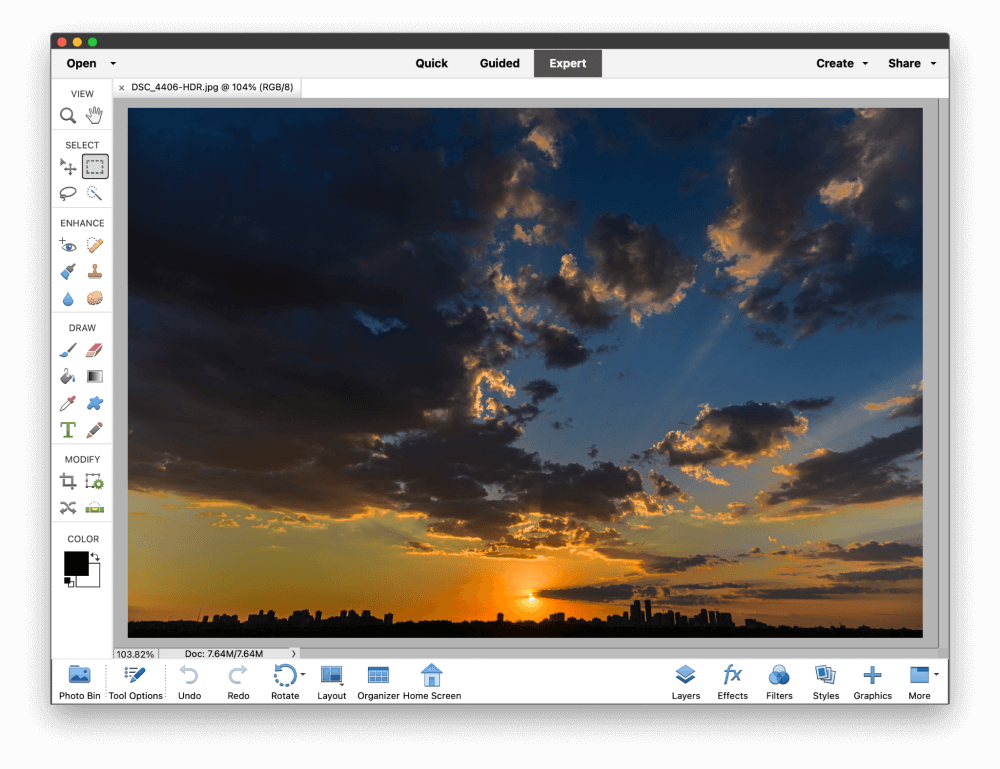
Interestingly enough, Photoshop Elements has even begun to add features that dramatically simplify some of the most complex edits you can make in the more complete version of Photoshop.
You may not get the same quality of result, but does that always matter if the edit can be done by a novice editor in half the time it would take a pro to do the same job?
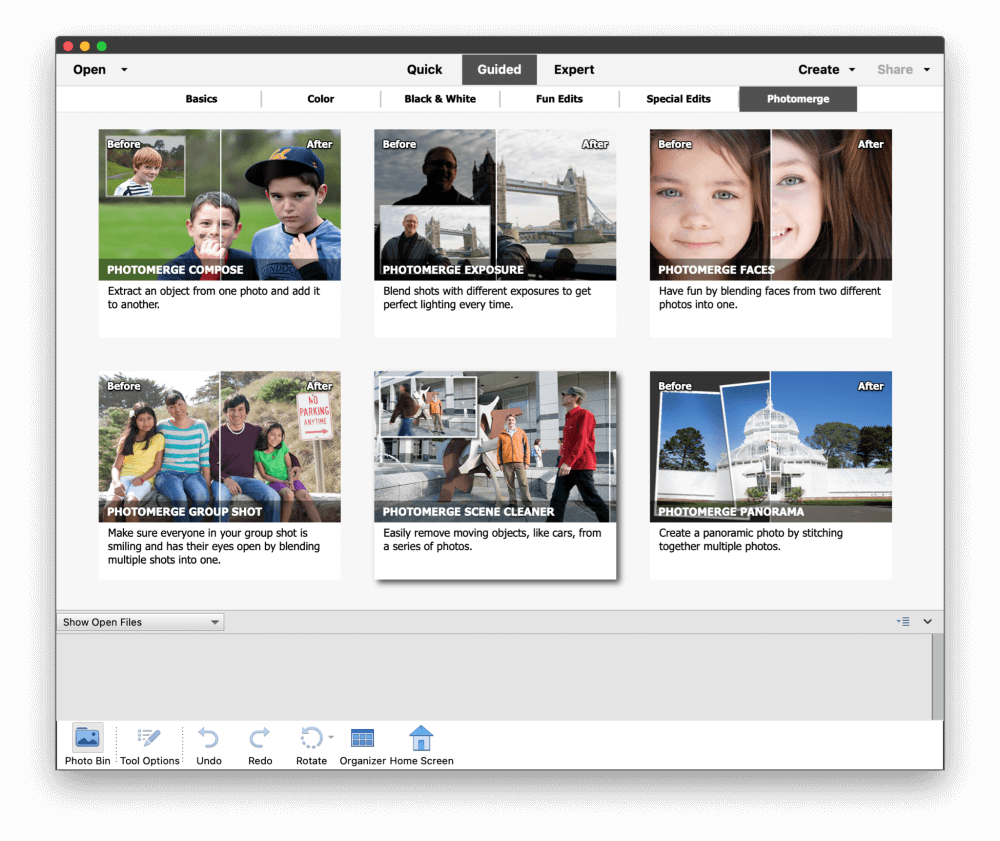
While Elements has great editing features for casual users, there are some major gaps in its capabilities when compared to the full version of Photoshop.
There is also no support for saving CMYK images, the color space used by most professional printers, and other color management options are also missing.
For casual users, this won’t matter much, but it would be a dealbreaker for most professionals and artists who care deeply about the exact color reproduction.
Photoshop Elements is available for a one-time purchase of $99.99 USD (but it often has a discount) for both Macs and Windows PCs. While it does require signing up for an Adobe account, there is no monthly subscription requirement.
Which is Right for You?
This can be a hard choice, but here’s the decision in a nutshell: if you’re running a business or aiming for professional-quality results, take the plunge and learn Photoshop CC.
If you just want to be able to edit your vacation snapshots and create fun pictures to share with friends and family, Photoshop Elements is a better choice.
If you’ve never edited any photos before and you’re not sure if you’re going to enjoy the process or not, it’s probably better to start with Photoshop Elements.
The Guided and Quick modes in Photoshop Elements will help you get used to image editing, and then you can switch to Expert mode once you’re more familiar with the program.
If you want the absolute best of the best, then invest the time and energy to learn Photoshop. It’s the gold standard for image editing, and there’s a good reason for that: it’s the most powerful option available.
There’s also nothing stopping you from starting out with Photoshop Elements and eventually upgrading to the full CC version if it turns out that you really like photo editing.
Additionally, there are free trials available for both programs, so you don’t need to choose based on my recommendations alone. If you’re still not sure after reading this article, download each trial and give the program a test drive to see which one you like better.
A Final Word
Phew, that took a bit longer than I thought it would, but I hope you’ve got a better idea of the difference between Photoshop and Photoshop Elements, and you know which one is better suited to your needs.
If you’re still struggling to make up your mind, reach out in the comments and the PhotoshopBuzz community will be happy to give you a hand!
However, you do it, happy Photoshopping!
About Thomas Boldt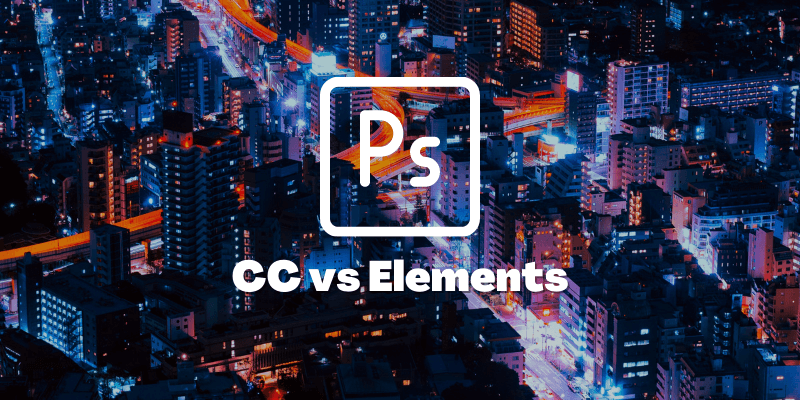
Richard Billiski
I am considering the new version of elements. I have my old one set up with my folders and albums the way i like it. If i install the new version will all my photos be in the same order in my organizer??
Richard
June
Hi Richard, updating the version shouldn’t mess up with your files. But make sure you have the files saved in the cloud just in case.